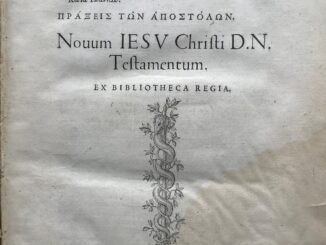Mark McKillion, Ulster University MA History graduate and volunteer for the Library in 2022, carried out research on John Weaver’s An essay towards an history of dancing, in which the whole art and its various excellencies are in some measure explain’d. … (1712) (object ID P001433446).
You can adopt this book for £250, and support the work of the Library, caring for our wonderful collections, and inspiring present and future generations!
John Weaver’s contributions to the art of theatre have been acknowledged by various writers such as Ivor Guest, who calls attention to Weaver’s background as a popular dance teacher in London and his native Shrewsbury, as well as his experimentations with a form of dance drama combined with pantomime, which would set the precedent for the development of ballet d’action during the 18th century.[1]
Likewise, Christena L. Schlundt highlights Weaver’s array of talents which helped bolster his knowledge of the performing arts, including his translation of the French Chorègraphie into the English Orchesography; as well as his role as a scientist, (Anatomical and Mechanical Lectures) historian, (The History of the Mimes and Pantomimes) and librettist. (The Loves of Mars and Venus)[2]
Therefore, in An Essay Towards an History of Dancing … Weaver himself speaks highly of the performing arts, as he opens the first chapter by declaring that ‘if it can be proved that both the body and mind receive considerable benefit from Dancing, then I hope it may be allowed to be worthy of esteem and countenance.’[3]
He also demonstrates his mindfulness of the developing nature of contemporary dance, as he makes a distinction between three types of stage-dancing, which included Serious Dancing, which ‘differs from the Common-Dancing usually taught in schools, as History Painting differs from Limning.’
Furthermore, he defines the other two types as Grotesque Dancing, which is designed for the stage in mind and requires a greater level of skill by the performer, and Scenical Dancing, which takes inspiration from the Pantomimes which rose to prominence in the Roman era.[4]




